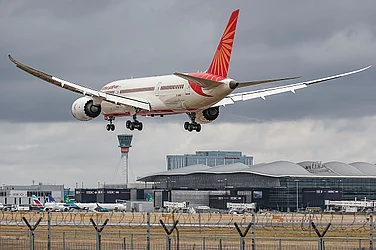From squalid mess to shining success, the collaborative efforts of the past nine years since the launch of the Swachh Bharat Mission (SBM) have transformed the sanitation and waste management landscape nationwide. In a recent meeting, Prime Minister Narendra Modi emphasised the crucial role of combining cooperative and competitive federalism to stimulate comprehensive action on this.
Modi has underscored that the SBM is a shared responsibility, and every contribution is invaluable. The triumphant journey of both Swachh Bharat Mission-Grameen (SBM-G) and Swachh Bharat Mission-Urban (SBM-U) is a testament to the collaborative spirit of the Central government, states and the local bodies. Cities like Indore stand out as exemplary models.
Differing funding structures support these programmes. For SBM-G, the Central and state sharing ratio varies based on the region, while SBM-U 2.0 has a tiered funding system based on city populations. With a foundational focus on rural sanitation through SBM-G, there is now a heightened emphasis on urban challenges such as garbage disposal and holistic waste management.
The ambitious SBM-U 2.0 aims to transform all cities into waste-free zones by endorsing 100% waste segregation, collection and scientific disposal. The fund-sharing pattern between the Centre and states for SBM-U 2.0 is 25:75 for cities with a population of over 10 lakh, 33:67 for towns with a population between one lakh and 10 lakh and 50:50 for cities having less than one lakh population.

The SBM-U was launched on October 2, 2014, by the Central government. The scheme provides funds to the state governments and Union territories, allocating them to urban local bodies based on the approved action plan by the state high power and technical committees. On October 1, 2021, the government launched SBM-U 2.0, a five-year initiative that builds on the first phase of SBM-U. The programme aims to go beyond the open defecation-free (ODF) status and focus on making urban India garbage-free. It emphasises sustainable sanitation practices, waste management and promoting a circular economy.
During the 8th National Advisory and Review Committee of SBM-U in March this year, projects worth Rs 3,000 crore were approved. The Ministry of Housing and Urban Affairs conducts an annual survey called Swachh Survekshan to assess the overall implementation of sanitation and waste management in cities. SBM-U 2.0 empowers states and UTs with financial support for advanced municipal solid waste management. Central funds are also being released to construct individual household latrines, community and public toilets, information, education and communication behaviour change and capacity building, skill development and knowledge management.
According to government data, out of total waste generated, a total of 75% of waste is being processed.
To carry forward the momentum, State Water Action Plans comprising 6,527 management projects worth Rs 37,636 crore and 982 parks and green spaces development projects worth Rs 439 crore have been approved. Out of approved projects, so far, 20 projects worth Rs 103.99 crore have been completed, and work is in progress on 633 projects worth Rs 5634.55 crore.
For successful implementation of SBM-U 2.0 and AMRUT 2.0, Rs 1,41,600 crore and Rs 2,77,000 crore, respectively, have been allocated, which include Central share along with corresponding matching share by states, urban local bodies’ share and through public-private partnership, etc.
The Department of Expenditure, Ministry of Finance, notified a new procedure in March 2021 to monitor the flow and utilisation of funds under the Centrally sponsored schemes, including SBM-U 2.0 and AMRUT 2.0. According to the new system, a single nodal account (SNA) will be implemented by a single nodal agency in a scheduled commercial bank for each CSS. The implementing agencies will use zero balance accounts to draw funds from the SNA, indicating the real-time state share contribution and utilisation of funds.
Public participation has led to the cleaning and maintaining of waterbodies and tanks in many villages and towns. Additionally, schoolchildren are being educated about sanitation and waste management, and various small-scale industries are being revived to replace plastic plates with disposable plates made from different types of leaves. These initiatives have also led to the creation of employment opportunities for managing waste recycling projects.
(The author is a senior journalist)

























